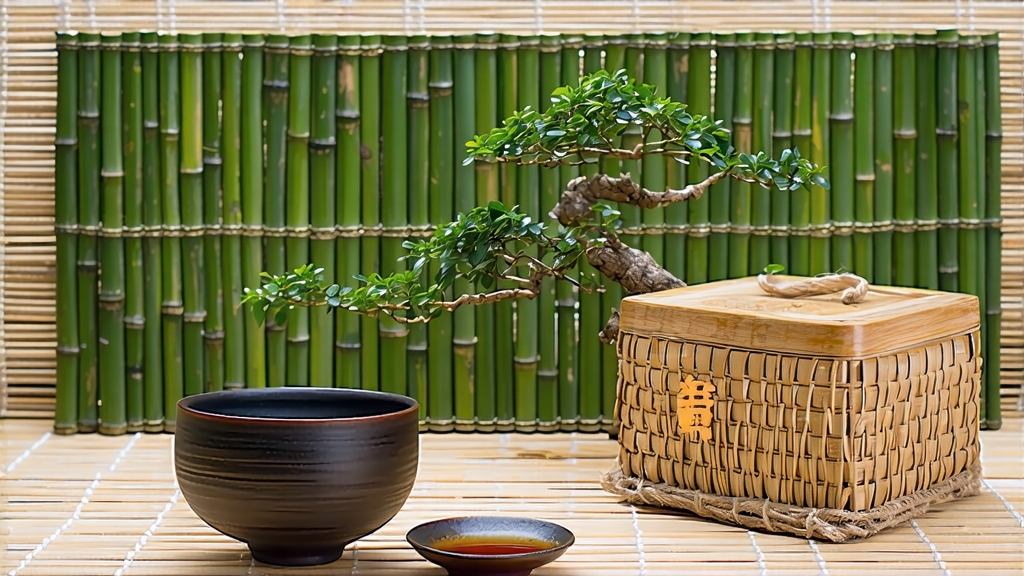
High in the mist-crowned Phoenix Mountains of Guangdong Province, rows of venerable tea trees cling to granite cliffs at altitudes between 350 and 1,300 metres. Here, where warm subtropical air collides with cool mountain breezes, the cultivar known as Phoenix Dancong—“single bush” in the local vernacular—has been coaxing perfumed leaves from gnarled trunks for more than nine centuries. Unlike most Chinese oolongs that are blended from hundreds of gardens, true Dancong is harvested tree by tree, each plant prized for its unique aromatic fingerprint. The result is a family of teas that can mimic peach blossom, gardenia, almond, ginger flower or even tropical lychee, all within the same botanical species, Camellia sinensis var. sinensis.
Legend traces Dancong’s pedigree to the Song dynasty (960-1279), when imperial examiners tasted a local brew so fragrant they christened it “Song Zhong” or “Song Dynasty Variety.” Written records from the Ming (1368-1644) describe tribute cakes of Phoenix tea pressed with camphor leaves and carried by porters to the northern court. By the late Qing, merchants in the port of Shantou were exporting “Feng Huang” oolong to Southeast Asia, where it became the signature cup in Chaozhou diaspora teahouses. The 1980s saw a renaissance of traditional charcoal baking, elevating Dancong from rustic commodity to connoisseur treasure now coveted in Tokyo, Paris and New York.
Although more than eighty aromatic profiles have been catalogued by local researchers, five “famous fragrances” dominate the market:
- Huang Zhi Xiang (orange blossom)
- Zhi Lan Xiang (orchid)
- Xin Ren Xiang (almond)
- Yu Lan Xiang (magnolia)
- Ye Lai Xiang (tuberose)
Each profile corresponds to a specific old tree or clone, propagated through air-layering to preserve its essential oil spectrum. Micro-terroir matters: a south-facing tree rooted in iron-rich red soil at 800 m may yield honeyed peach notes, while its neighbour ten metres away, shaded by firs, leans toward bitter cocoa. The highest old-growth plots, accessible only by stone footpaths, produce “Shan Cha” (mountain tea) that fetches prices rivalling top Burgundy crus.
Crafting Phoenix Dancong is a ten-step choreography that begins in the cool dawn of late April. Experienced pluckers climb bamboo ladders to snap the standard “two leaves and a bud” shoot, taking care not to bruise the edges—oxidation must be triggered later, not in the basket. The harvest window is cruelly short: three fine days between spring rain and summer heat.
Withering starts outdoors on reed mats where leaves lose roughly 10 % moisture under the mountain sun, then moves indoors onto raised bamboo racks for “yin wei,” a quiet withering that can last twelve hours. Artisans shuffle the racks every thirty minutes, coaxing grassy volatiles away while concentrating floral precursors.
Next comes the signature “shake-green” or “qing lang” phase: 5–7 rounds of tossing the leaves in a rattan drum, each round followed by a rest of equal length. The mechanical bruising activates polyphenol oxidase, turning leaf rims a coppery red while the veins stay jade green—Dancong’s hallmark “green belly with red edge.” Oxidation is arrested at roughly 30 %, lower than Taiwanese oolongs but higher than Tie Guan Yin, preserving bright aromatics while developing body.
A short electric bake at 90 °C fixes the enzymes, after which the semi-finished maocha is sorted by size and stem content. The decisive act is charcoal baking over lychee wood embers inside squat clay ovens. Master bakers, many carrying the surname Wu or Lin for five generations, control temperature solely by hand: palms hover over bamboo trays, adjusting distance from coals every fifteen minutes. Initial baking lasts three hours at 80 °C; the tea rests fifteen days, then is rebaked at 70 °C for two more hours. Some premium lots endure three cycles spread across six months, a laborious schedule that caramelises sugars and embeds a whisper of smoked lychee pit into the finish.
To unlock Dancong’s kaleidoscope of scents, the Chaozhou gongfu ritual remains the gold standard. A